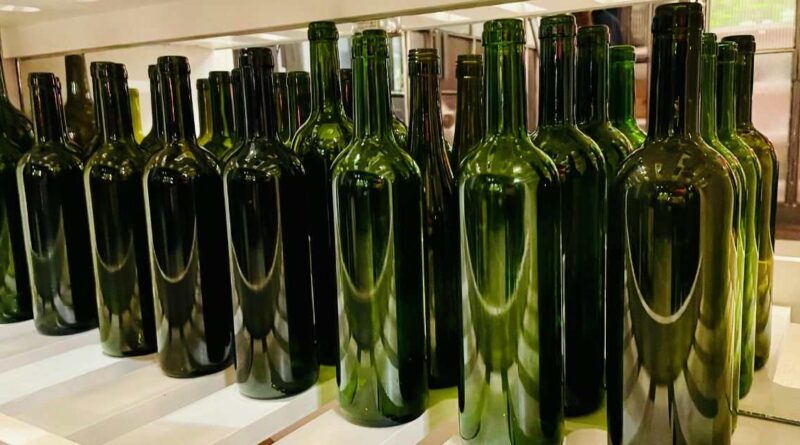Efficiency and Innovation in Modern Bottling and Canning Lines
In the world of beverage and liquid food production, bottling and canning lines represent the backbone of any large-scale manufacturing process. From soft drinks and energy beverages to craft beers and cooking oils, the speed, reliability, and flexibility of these systems play a decisive role in a brand’s ability to compete and grow. As consumer expectations evolve and market demands intensify, the technology behind bottling and canning lines has seen significant advancements, offering producers a combination of performance, hygiene, and adaptability.
The Structure of a Bottling Line
A modern bottling line is a highly synchronized system made up of several critical stages. Each stage must operate seamlessly with the next to ensure a continuous and efficient flow of production. The basic structure of a typical bottling line includes:
- Bottle unscrambling and rinsing
- Liquid filling
- Capping or sealing
- Labeling and coding
- Inspection and quality control
- Packing and palletizing
Each of these components can be tailored to suit specific industry requirements, such as filling glass bottles versus PET bottles, or handling carbonated versus still liquids.
Advanced bottling lines also integrate smart sensors, automatic rejection systems, and data analytics to minimize downtime and optimize performance. Whether operating in a high-volume production facility or a more niche, craft-oriented setting, these systems offer scalability and customization.
For more information on bottling line systems, you can visit: https://stm-pack.com/filling-lines-categories/complete-filling-lines/bottling-lines/
Canning Lines: Meeting the Demand for Lightweight and Durable Packaging
In recent years, canning lines have gained prominence across various sectors, particularly in the beverage industry. Lightweight, recyclable, and ideal for preserving taste and freshness, cans offer both practical and environmental advantages. As a result, canning lines are now an essential investment for producers targeting convenience-driven markets.
Similar to bottling lines, a canning line typically consists of:
- Can feeding and rinsing
- Filling with product (carbonated or non-carbonated)
- Seaming and lid placement
- Leak detection and pressure checks
- Label application or inkjet coding
- End-of-line automation for boxing and stacking
What distinguishes canning lines is their ability to handle high pressures and speed without compromising the integrity of the seal. This is especially important for carbonated drinks, where maintaining consistent internal pressure is vital for product quality and shelf stability.
To explore canning line systems in more detail, see: https://stm-pack.com/filling-lines-categories/complete-filling-lines/canning-lines/
Key Trends Driving the Evolution of Bottling and Canning Technologies
Modern bottling and canning systems are not only becoming more efficient but also more intelligent. Here are some of the prevailing trends reshaping the landscape:
- Sustainability: Lines are being designed to use less energy and water while producing minimal waste. There’s also growing focus on compatibility with recyclable packaging materials.
- Automation and AI: From predictive maintenance to robotic arms for packaging, automation ensures consistency and reduces the risk of human error.
- Modular design: Equipment can be easily reconfigured or expanded, allowing producers to adapt to changing market demands or product lines.
- Hygienic design: With increased attention to food safety, lines are constructed for easy cleaning and to minimize contamination risks.
- Digital integration: Remote monitoring and real-time analytics enable better decision-making and faster response to issues.
Choosing the Right Line: Bottling or Canning?
The decision between investing in a bottling or canning line depends on several factors, including:
- Product type and packaging preferences
- Target market and distribution channels
- Expected production volumes
- Environmental goals
- Cost structure and ROI
For example, a craft beer producer aiming to reach festival-goers and outdoor consumers may lean toward cans for portability, while a premium juice brand targeting boutique retail may prefer the aesthetic of glass bottles.
Integration with Industry 4.0 and Smart Manufacturing
As part of the broader shift toward Industry 4.0, bottling and canning lines are increasingly connected to wider manufacturing ecosystems through the Industrial Internet of Things (IIoT). Sensors and actuators embedded within machines now feed real-time data into central control systems, allowing for continuous monitoring, predictive maintenance, and seamless coordination across the production floor. This interconnectedness enhances operational visibility, enables instant troubleshooting, and supports the long-term goal of lights-out manufacturing—where human intervention is minimal, and efficiency is maximized.
Customization and Short-Run Flexibility
Consumer preferences are trending toward personalization and niche products, pushing manufacturers to offer shorter production runs with more frequent changeovers. To meet this demand, modern bottling and canning systems are built with flexibility in mind. Quick-change components, adaptive fill levels, and programmable settings make it possible to switch between product types and formats with minimal downtime. This agility not only helps brands stay responsive to market trends but also reduces waste and boosts the overall return on investment in production infrastructure.
Final Thoughts
Bottling and canning lines are integral to the packaging and distribution of countless liquid products. Their efficiency, reliability, and ability to preserve product integrity directly impact brand success and customer satisfaction. As technology continues to evolve, these systems are becoming smarter, greener, and more flexible—empowering producers to meet modern challenges and seize new opportunities. Whether you are optimizing an existing facility or planning a new production line, understanding the structure, advantages, and technological trends of bottling and canning lines is essential for making informed and strategic investments.

